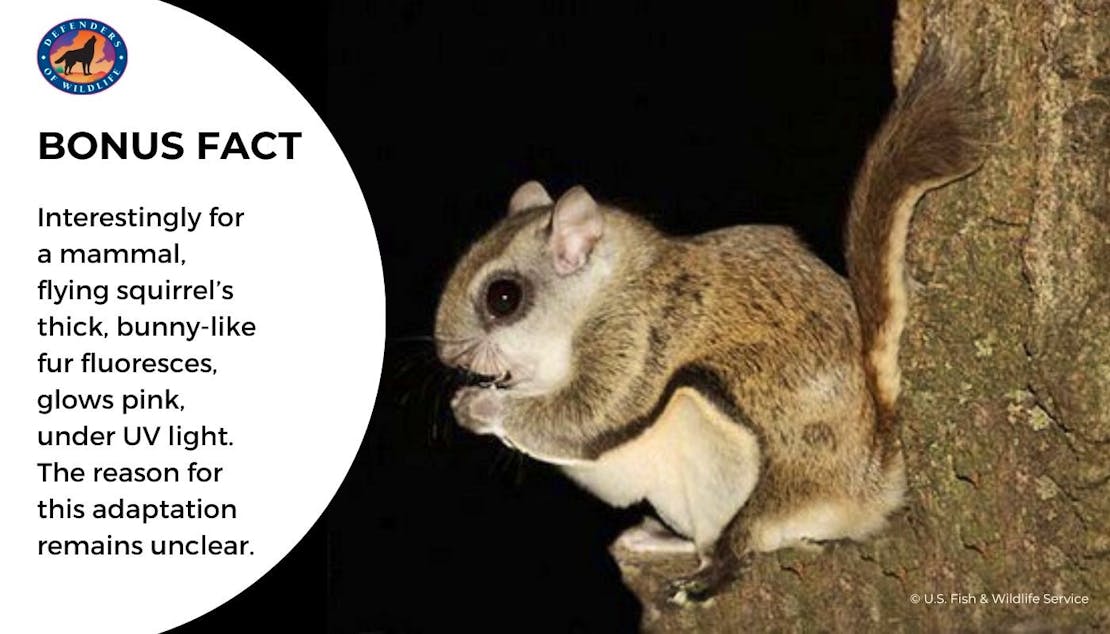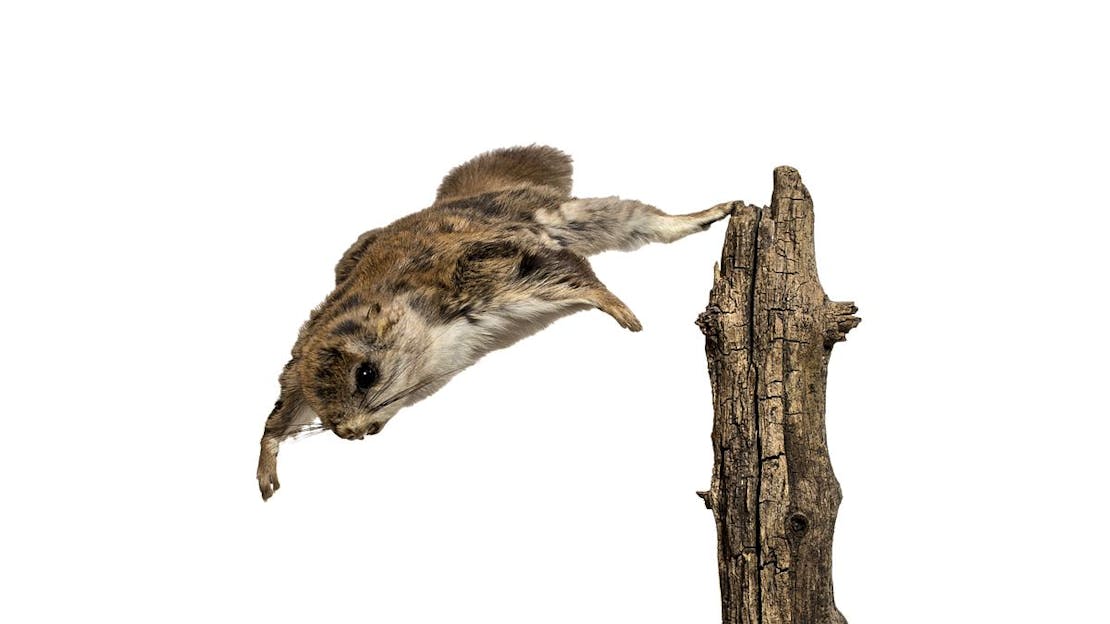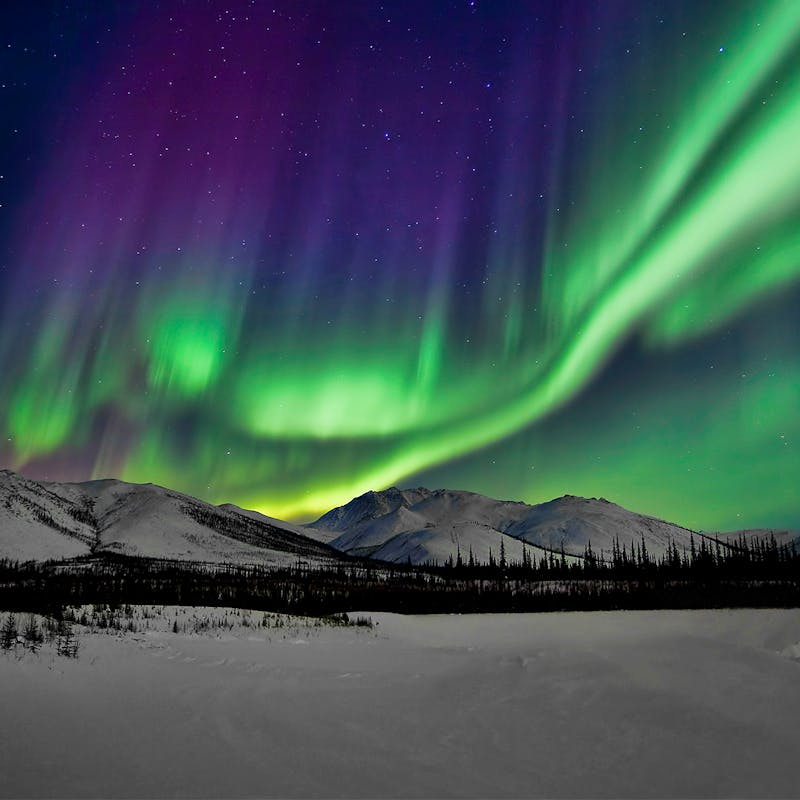Launching off the limb of a hemlock bough, a flying squirrel spreads its patagia — soft, muscular membranes of skin that connect at the squirrel’s wrist and ankle — and parachutes through the forest canopy to deftly land on a yellow cedar over 100 feet away, more than the length of a professional basketball court.
Flying squirrels are nocturnal, tree-dwelling rodents found in forests across the United States and Canada. Notably smaller than the common red squirrel, flying squirrels have giant black eyes and extremely soft brown fur on top and light fur on their underside.
There are two species in North America: the southern flying squirrel (Glaucomys volans) and the northern flying squirrel (Glaucomys sabrinus). The Tongass National Forest in southeast Alaska, however, is home to the endemic Prince of Wales Island flying squirrel (G. sabrinus griseifrons), a subspecies of northern flying squirrel only found on Prince of Wales Island.
Glide through some fun facts about flying squirrels, learn how these cute, small mammals are an indicator species of healthy forests and how you can help protect them and the forests they call home.
Can Flying Squirrels Fly?
While the name flying squirrel is a slight misnomer, they are still volants. This means they move through the air with expert skill and possess wing-like features. In this case, these features are the patagia. When outstretched, the patagia form gliders that catch air in flight, like a base-jumping suit, that the squirrel uses to navigate the air. Another smaller patagium stretches from each ankle to the tail for added flight control. While airborne, flying squirrels continually adjust their body position to modify their aerodynamic lift and drag, landing them precisely where they aim to be.
Where do flying squirrels live?
Northern flying squirrel populations span the colder climates of the east coast to the Pacific, up through central Alaska. They’re pretty common, if you know where to look. Flying squirrels use cavities in trees and snags for denning habitat and regularly rotate through dozens of cavity nesting spaces throughout the season. When winter comes, they bundle up into small groups for torpor to help stay warm.
Unique among peers
Just over the size of Delaware, Prince of Wales Island is the fourth-largest island in the United States. It is located off the coast of Alaska’s southeast panhandle and is surrounded by cold maritime fog and staggering mountain peaks. This island is home to some of the last remaining old growth rainforests in the world, as well as deep scars from historic clear-cutting, and is home to the Prince of Wales flying squirrel.
This endemic flying squirrel is an important indicator species of forest complexity and connectivity, as identified in the Tongass Forest Plan. Island endemics, including this flying squirrel, are particularly vulnerable to risks of extinction because of restricted ranges, small population sizes, minimal genetic variation, susceptibility to random events, and constraint from pressures caused by human disturbances. Recent studies show Prince of Wales Island flying squirrels have the lowest genetic diversity among all subspecies of flying squirrel across its distribution in North America. They are genetically distinct from their nearby neighbors and are more closely related to populations in the Appalachians than they are to populations in the Pacific Northwest.
Small Animals Need Connected Habitats
Flying squirrels depend on larger patches of late seral, diverse forests — like old growth forests — that are sufficiently connected to allow small mammal passage between patches. Recent studies found Prince of Wales flying squirrels occurred only in habitat patches with a minimum total area of 180 acres of old-growth forest and viable breeding populations occurred only in structurally complex western hemlock (Tsuga heterophylla) old-growth forests.
To sustain their population on Prince of Wales Island, flying squirrels require protected areas of old-growth habitat with sufficient connectivity to allow squirrels to move within and between these areas. Due to natural and human-caused fragmentation — from extensive logging and roadbuilding, for example — passage to and from protected areas can be difficult or impossible for flying squirrels. Logging has reduced contiguous old-growth forests on Prince of Wales Island by about two-thirds. The resulting disconnection between remaining forested areas increases the chances of inbreeding, furthers population decline, lowers genetic diversity and ultimately increases the possibility of extinction.
What do flying squirrels eat?
Flying squirrels eat insects, lichens, fruits, green vegetation, seeds, tree buds, and meat (fresh, dried or rotten).
Most importantly, though, they have an appetite for fungi, which is key to forest regeneration. They feed on the fruiting bodies of underground fungi — often unearthed by other animals — and help spread fungal spores as they cruise through forest canopies. These mycorrhizal fungal colonies form a symbiotic bond with the roots of various woody plants and trees. The fungi drastically expand the root function of conifers, improving nutrient uptake. In exchange, fungi draw sugars from the trees. Flying squirrels are actively creating stronger, healthier and more resilient forests!
How to Help
You can help these flying squirrels get the space and protection they need. The Tongass National Forest is currently undergoing a multi-year forest plan revision process. It is an opportunity to hear from the public about what important components the plan should contain. Defenders of Wildlife is using the best available science to advocate for wildlife and habitat, including siting, design and management of old growth reserves and ensuring connectivity between reserves. Be a Defender and stay informed on the forest planning process where you can add your voice to advocate for increased old growth protections.









